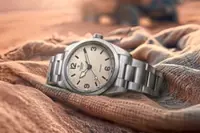During Nato exercises, a convoy including Stryker armoured combat vehicles heads toward the Polish border in Frankenberg, Germany. — ©2024 The New York Times Company
ABOUT 90,000 Nato troops trained in Europe this spring for the Great Power war that most hope will never come: a clash between Russia and the West with potentially catastrophic consequences.
In Estonia, paratroopers from the US 82nd Airborne Division out of Fort Liberty, North Carolina, jumped out of planes alongside soldiers from Colchester Garrison in Essex, Britain, for “forcible entry” operations.





